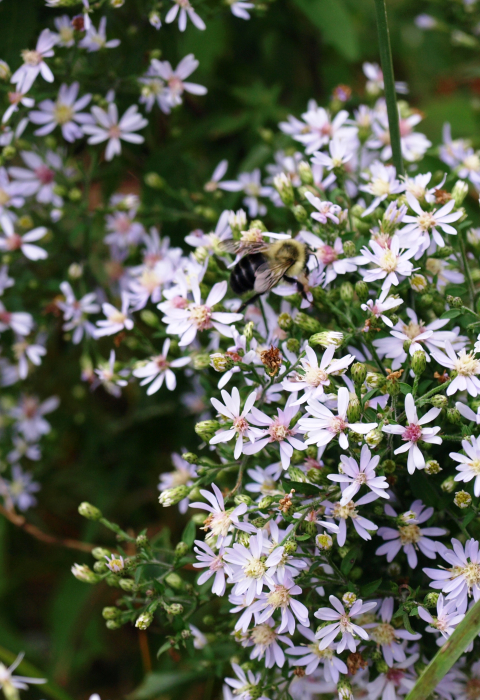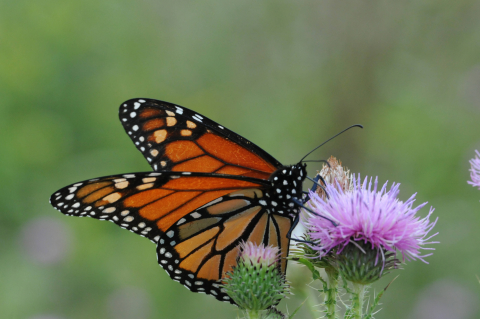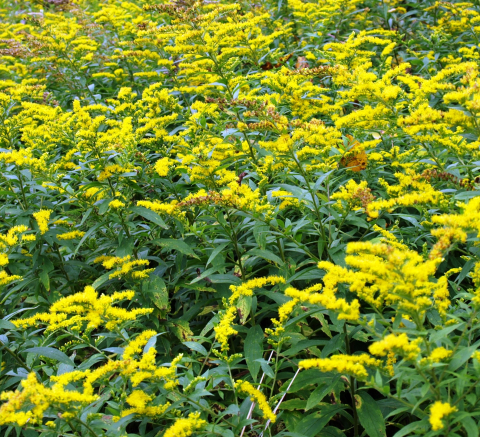Pollinating Insects are Essential to Our World
Native bees, butterflies, moths, wasps, flies, ants, and beetles are essential to a healthy environment. These beneficial insects visit a wide range of flowers produced by trees, shrubs, vines, and other plants, including humans' crops. In collecting nectar, they disperse pollen that fertilizes the flowers, which ultimately develop into fruits and seeds, many of which are eaten by wildlife.
A Large Tribe
Among the better known pollinating insects in the Northeast are bumblebees (Bombus species). Other important bee pollinators include sweat bees, carpenter bees, digger bees, mason bees, and leafcutter bees.
Butterflies pollinate many plants. Moths visit flowers mainly at night. Many flies and beetles pollinate flowers as well.
As adults and larvae, these insects are an important food for wildlife.
Problems and Solutions
Populations of wild pollinators have fallen because of pollution, diseases, stress brought on by climate change, humans' improper use of herbicides and pesticides, and a loss of food plants caused by development, intensive farming, and invasive plants degrading many habitats.
To thrive, pollinators need places where they can find food, shelter from the weather, build nests, and lay eggs.
Pollinators Love Early Successional Habitat
Habitat projects aimed at creating and improving young forest and shrubland can also benefit pollinators. Removing selected trees will let more sunlight reach the ground, leading to more abundant and diverse plant life. As part of a young forest project, wildflowers and native shrubs can be seeded or planted.
Resources
New Hampshire Extension explains how to establish a wildflower meadow from seed.
The Xerces Society for Invertebrate Conservation offers Pollinator Habitat Installation Guides that can be combined with region- and state-specific guidelines to plan, create, and maintain nectar- and pollen-rich habitats such as wildflower meadows and hedgerows stocked with native shrubs.
The Pollinator Partnership publishes a series of regional planting guides, Selecting Plants for Pollinators.
This research paper examines how native bees in southern New Hampshire use habitats managed as young forest and shrubland for American woodcock and New England cottontail.



